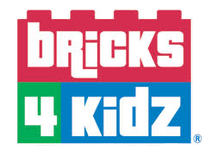Just about everyone agrees: Toys and activities that promote effort and imagination will truly engage a child’s excitement and curiosity. That is one reason why many parents are taking another look at games, puzzles, construction toys, and after-school programs that spotlight science, technology, engineering and maths (STEM).
Unfortunately, some STEM offerings are better than others. Some are the real deal, while others are more play-based, and are merely taking advantage of well-intentioned parents and family members.
It’s not hard to see the benefits. When your children are exposed to STEM concepts in their free time, it has a laddering effect on learning. That is, when they walk into the classroom with a familiarity with, say, photosynthesis, ahead of the lesson, their interest and familiarity can speed up their mastery and make them more engaged and interested in their studies.
For more than a decade, those who design toys, games and activities for kids have been becoming more aware of the learning opportunity. Visit your favorite big-box store, and there’s an entire subsection of toys that promote STEM learning on the shelves. What’s more, many toy makers have made an effort to make girls, who have long been overlooked, feel more comfortable and included.
The growth in STEM toys and activities is not about to slow down. According to one marketing report, the STEM toy market is expected to grow 10 percent through 2021. With that insight, the growth potential for extracurricular activities is also there.
Questions every parent should ask when choosing a STEM toy or activity
So how can a parent spot the games and activities with very thin STEM benefits, versus the ones that are high quality and proven to enhance your child’s brain and learning? Here are a few questions to ask.
* Which STEM concept would kids learn?
* Is it designed to teach one smaller concept in a specific, rigid way? Or does it leave room for creativity, design and problem-solving?
* Is the concept presented in an interesting and compelling way that’s age appropriate for your child?
* What is the format of the class? Who is teaching the class? Is it taught in a way that includes and encourages participation from all students? What happens if your child needs extra help with a concept?
Bottom line, if the item or activity gets them into their zone, it’s a win. With that in mind, look for things that “hit the sweet spot between rigor and joy,” writes Andrew B. Raupp for Forbes, “and watch your child’s interest in STEM take flight.”
Adopting the STEM mindset at home
Buying a specific toy or signing up your child for an enrichment class that teaches STEM concepts is certainly a step in the right direction. But don’t stop there.
Here’s what writer Andrea Schwalm had to say in Wired.com: “I don’t for a second believe that toy selection will turn kids into something they are not — but I suspect that toys (in combination with books, movies, teacher expectations and family attitudes) do help foster interests that can turn into hobbies that can turn into careers.”
That brings us to the big takeaway. Fostering a mindset that makes kids comfortable with STEM is not just a single action, it’s a state of mind and it begins at home. Here are just a few tips to get started.
Be mindful of your attitude toward school. Especially so when it comes to traditional gender attitudes toward science, technology and math. Some women realize later in life they held back in STEM subjects during their time in school. Perhaps math and science were considered unfeminine by not only their peers, but by key family members. Be watchful of these attitudes and the effects of peer pressure showing up in your teen or tween daughter and discuss them.
Embrace nonfiction: Next time you watch something on the small screen or choose a new book from the library, explore documentaries or a nonfiction book about something that’s related to science. These often do a great job of presenting complicated concepts in a way that inspires wonder and awe.
Think about daily doses. It’s easy enough to make time for reading and drawing. But think about little ways you can incorporate the lessons and insights into daily life. For example, giving your elementary-aged child pocket change to choose something to buy at a thrift shop or garage sale is a nice low-risk way to help them incorporate real-life math.
Make time for play. So back to the beginning of the blog. Maybe you have a STEM-inspired toy sitting on the shelf, unused. Pull it down one evening and make it a family activity, so you can discover what might be keeping your child from using it. Maybe they need extra help understanding it. Or, it’s possible the item just wasn’t all that well designed. If so, think like an engineer and take a critical look together. Does it actually teach what it promised to teach? What can be done to improve it?
A STEM activity that is always a good bet is one with the name Bricks 4 Kidz. Whether it’s an after-school activity or a camp, you know your child will be having fun learning STEM concepts while building our unique models from LEGO Bricks. Discover a Bricks 4 Kidz class that’s offered in your area today.


